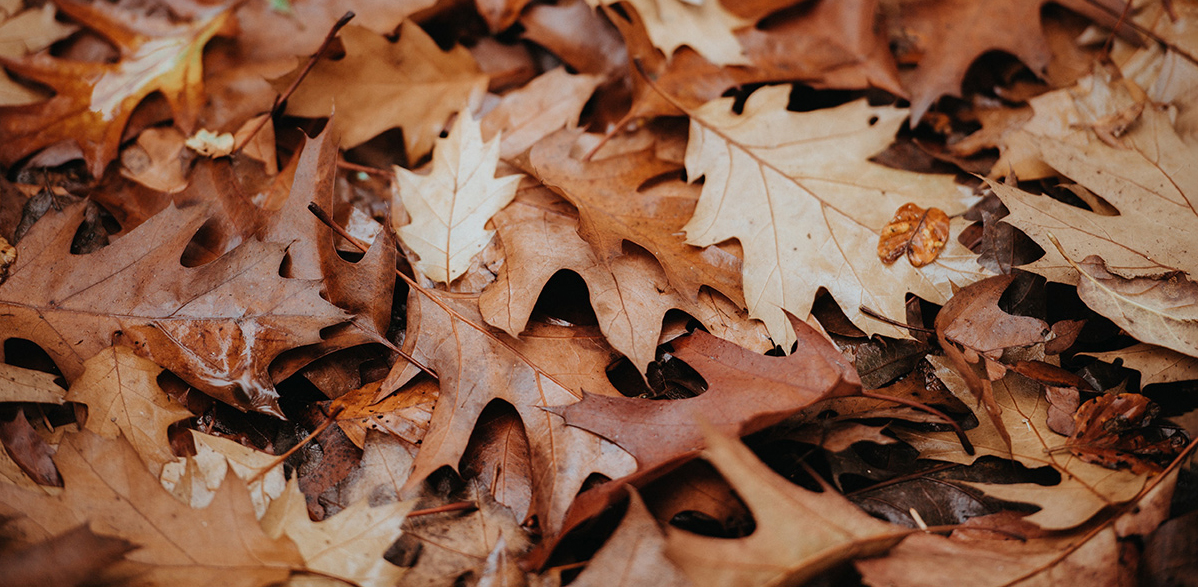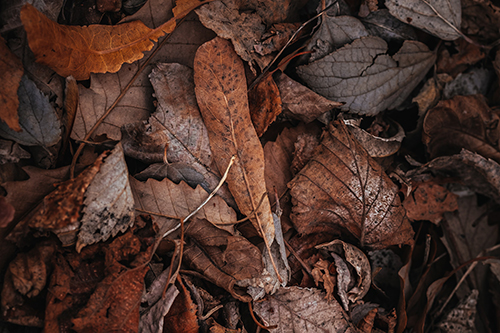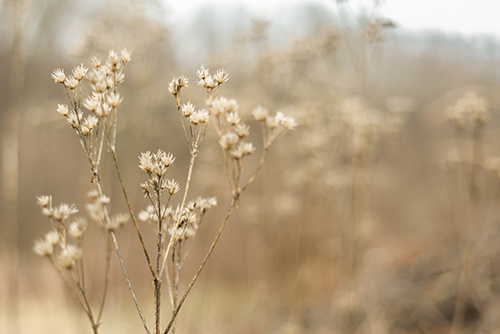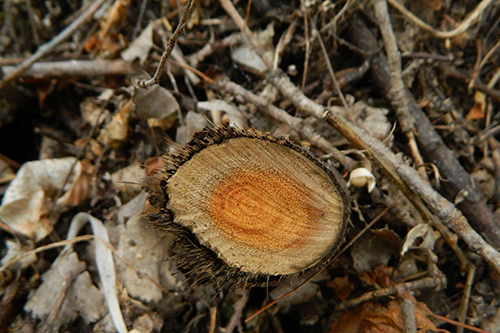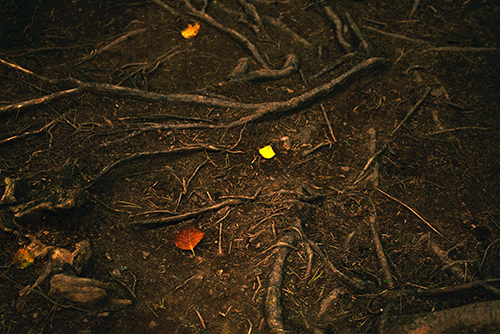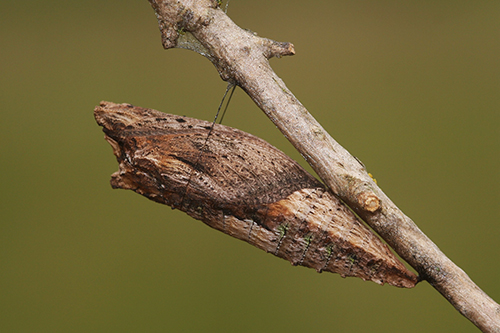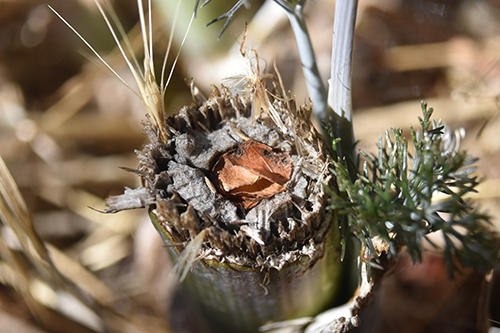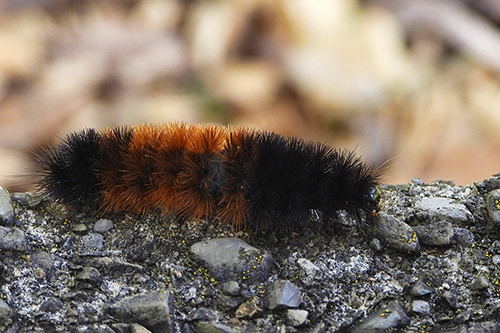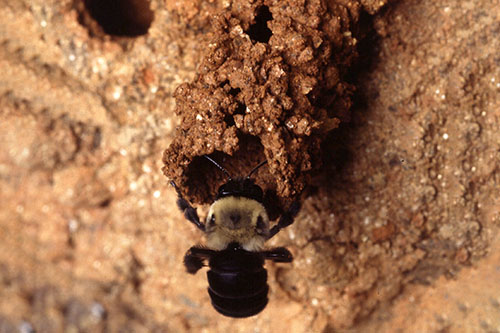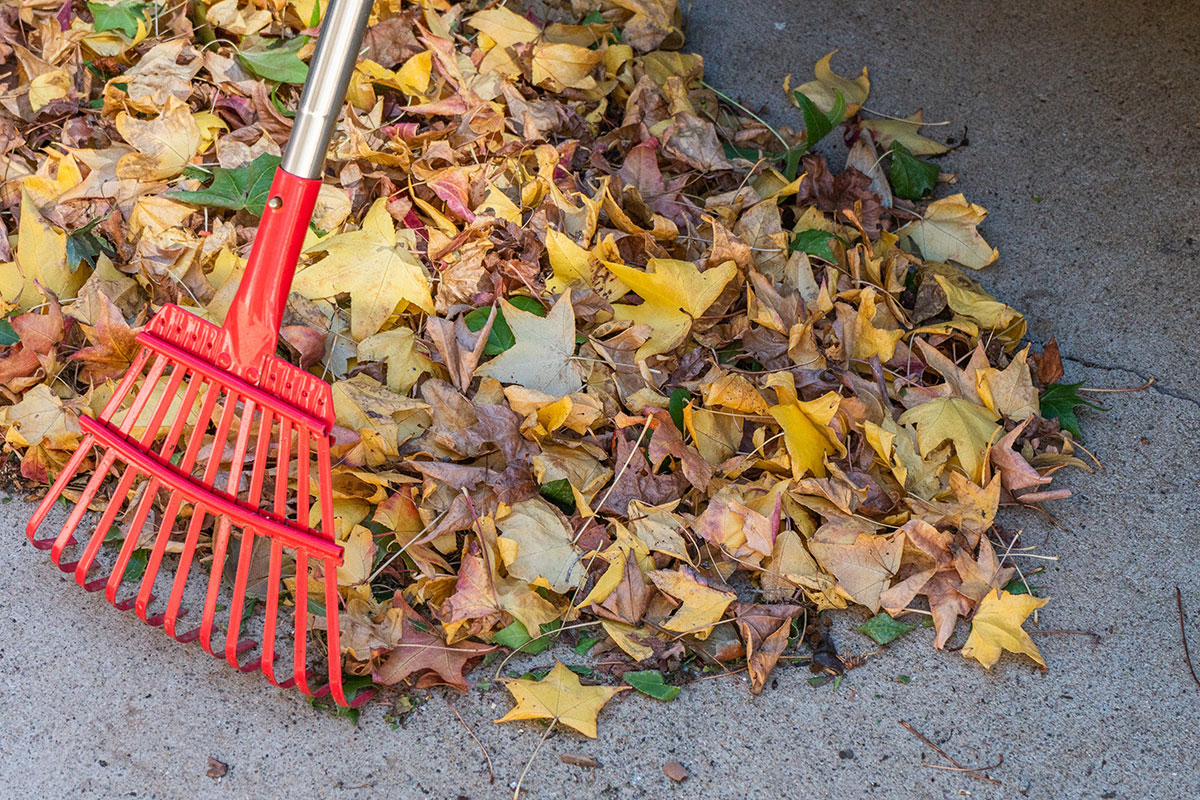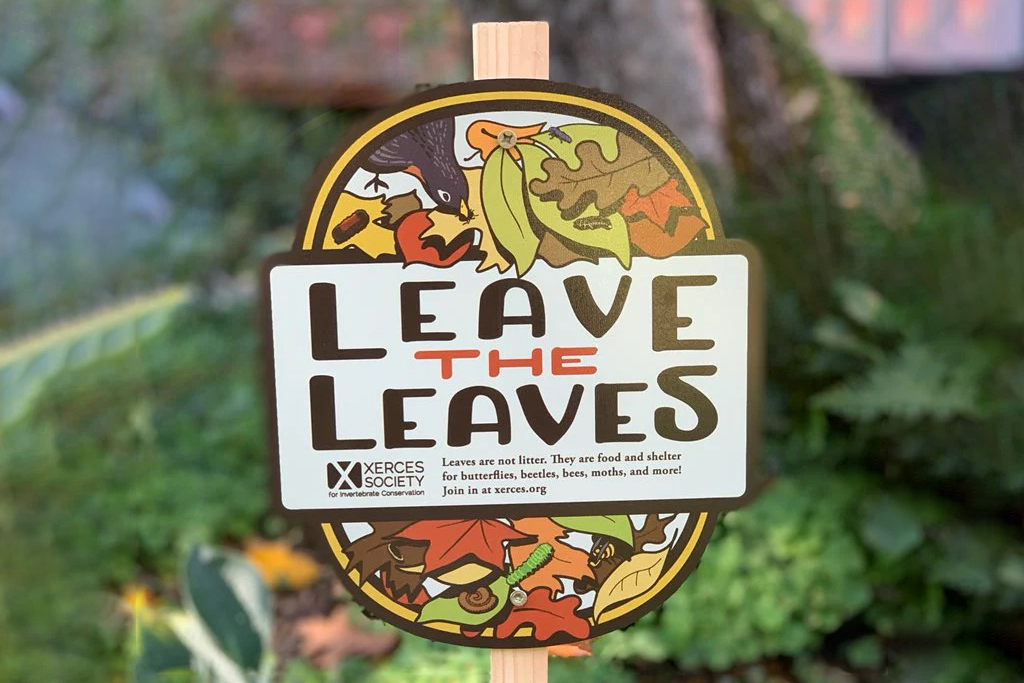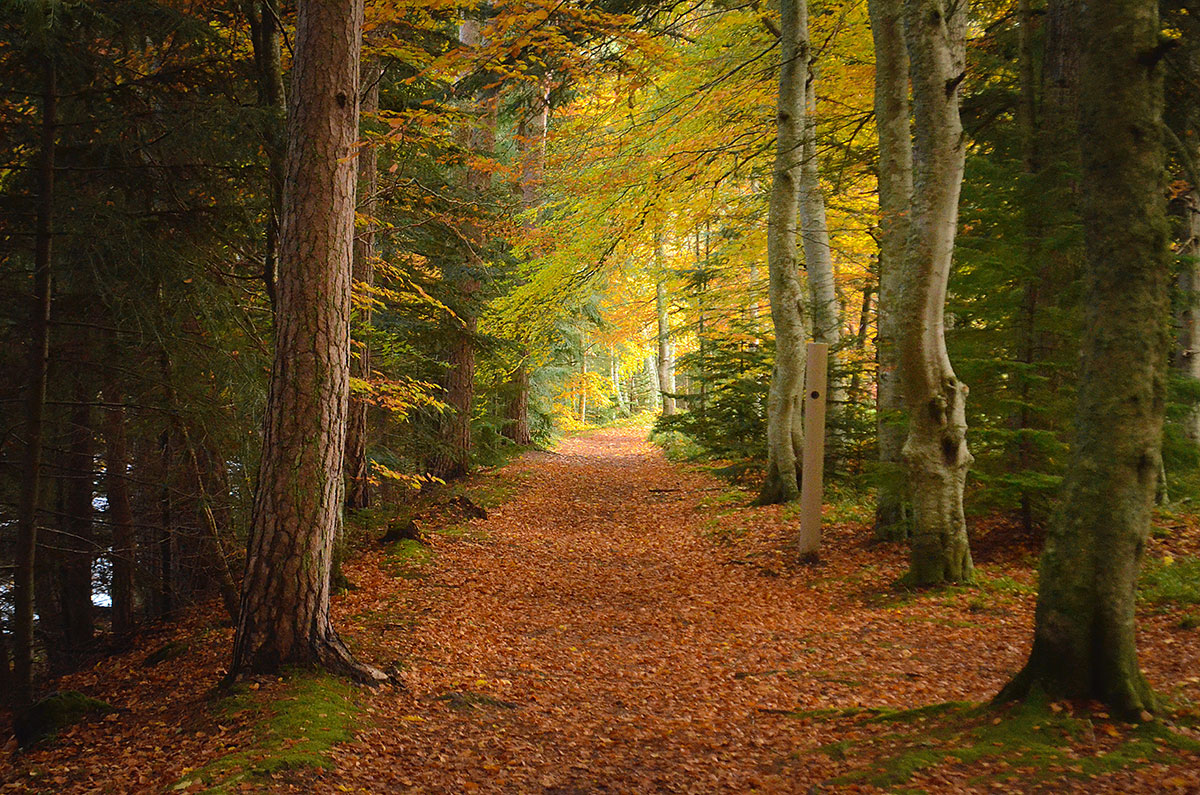Where do insects and other invertebrates go in the winter? The vast majority “overwinter,” or spend winter, right where they spent all summer — just less active and more hidden.
Think twice before you rake, mow, and blow this year. Invertebrates rely on fallen leaves and other organic debris to cover and insulate them from the elements. Whatever your landscape, you can ensure that resources for nests and overwintering habitat are available.
If you’ve provided native and diverse habitat for invertebrates and pollinators during the growing season, helping those invertebrates in the winter is almost as simple as doing nothing. Leave those habitats alone for winter.
Leaves
Important invertebrates will find a home in leaves a couple of inches thick, which mimics natural ecosystems.
Hollow stems
Stems hollow out when plants die off, providing cavities in which critters can make a home or nest.
Trees, branches and brush
Brush piles and trees provide winter habitat. Dead trees and hollowed branches are useful spaces.
Soil
While invertebrates are always plentiful in the soil, additional species will join in the dirt in winter, preferably insulated with leaves or brush.
- Great spangled fritillary and woolly bear caterpillars tuck themselves into leaf piles for protection from cold weather and predators.
- Red-banded hairstreaks lay their eggs on fallen oak leaves, which become the first food of the caterpillars when they emerge.
- Luna moths and swallowtail butterflies disguise their cocoons and chrysalises as dried leaves, blending in with the “real” leaves.
- Bumble bees create nests in cavities underground, in trees, or in brush piles. They prefer abandoned rodent burrows. At the end of summer, mated queen bumble bees burrow only an inch or two into the earth to hibernate for winter. An extra thick layer of leaves is welcome protection from the elements.
- 30% of native bees are tunnel-nesting, such as leafcutter and mason bees. These solitary-nesting species need narrow tunnels or other tiny spaces in dead wood, hollow stems, or brush piles.
- Yellow spotted millipede juveniles eat humus, the rich organic layer of decayed plants and animal matter at the surface of the forest floor.
- Stick insects drop more than 100 eggs from treetops that free-fall to the ground, where they overwinter in the leaf litter until spring. These eggs are disguised to look just like seeds. The ruse attracts ants, who take the seeds back to their nests and bury them, where the baby stick insects hatch safely beneath the soil.
Tiger swallowtail butterfly's chrysalis (Photo: Dean Morley, Flickr)
Leafcutter nest cavity (Photo: Sara Morris)
Woolly bear caterpillar (Photo: ☼☼Jo Zimny Photos☼☼, Flickr)
Mustached mud bee nest (Photo: USDA, Scott Bauer, Flickr)
Leaving the leaves and other plant debris doesn’t have to mean sacrificing your yard to the wilderness. The leaves don’t need to be left exactly where they fall. You can rake them into garden beds, around tree bases, or into other designated areas. Too many leaves can kill grass, but in soil they can suppress weeds, retain moisture, and boost nutrition.
Avoid shredding leaves with a mower. Raking or blowing (electric) are alternatives that will keep leaves whole for the best cover and protect the insects and eggs already living there.
If you decide you need to clean up the leaves and debris in spring, make sure you wait until late in the season so as not to destroy all the life you’ve worked to protect.
Leaves have a tendency to blow in the wind, often passing through several yards on the way to their final destination. Let your neighbors know your yard is playing an important role in the ecosystem.
One way to share the message is with a Xerces “Leaves the Leaves” sign. Signs are available in our gift center in exchange for a donation. Each sign comes with a year membership to the Xerces Society and supports our work to conserve invertebrates and their habitats.
Another option is to share your dedication to the cause on social media with the hashtag #LeaveTheLeaves.
- Nesting & Overwintering Habitat fact sheet
- How to Create Habitat for Stem-Nesting Bees
- Xerces “Leaves the Leaves” sign
- Blog: Leave The Leaves! These Invertebrates Depend On It.
- Blog: Leave the Leaves
- Blog: Leave The Leaves To Benefit Wildlife
- Blog: Don’t Spring into Garden Cleanup Too Soon!
- Blog: Where Do Pollinators Go in the Winter?
- Blog: Midwinter Tasks for Pollinator Gardening

